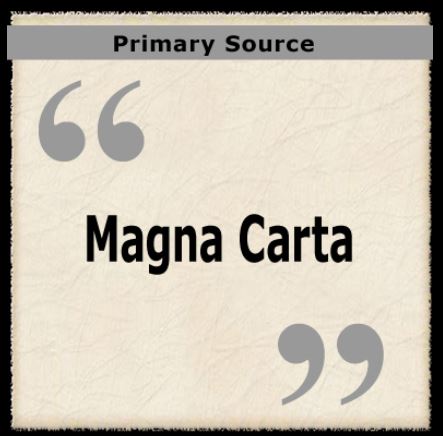![061815_01P_FS Houses of Parliament, London, England. Photo: Library of Congress Prints & Photographs Division [LC-USZ62-94166]](https://mhebtw.mheducation.com/wp-content/uploads/2015/06/061815_01P_FS-678x381.jpg)
If there were a Hall of Fame for historical documents, the Magna Carta would be its most valuable player. It is considered one of the most influential pieces of writings in all of history. This past weekend marked the 800th anniversary of the signing of this historic document of governing principles. To mark this milestone anniversary, there were commemorative events to mark the occasion, most notably in London, where the document was sealed and made into law.
Establishing Principles of Liberty

Back in the Middle Ages (5th to 15th century), much of European society was structured and guided by the feudal system. This meant that the king owned all of the land and everyone was subject to his rule, even if the rules were unfair. Under the king were barons, whom the king granted land in exchange for service and loyalty (mainly providing money and men for wars). The lower class was made up of peasants, who had no freedom whatsoever. Because a king’s power was seen as dependent upon the size of his empire, the support of his many barons played a role in determining influence.
King John, who became king of England in 1199, was unpopular among his people because of grave abuses of power (mainly excessive taxes to fund unsuccessful wars, as well as his lavish lifestyle). By 1215, John’s control of land and the people’s support of him was in bad shape. John had lost much of the land in present-day France, which had been acquired by his father. John had also not been successful in acquiring new land, which could be divided among his noble supporters. Finally, a group of “rebel barons” got together and created the “Charter of Liberties.” Due to his weakened position, King John signed the document.
After King John died in 1216, an addition was made to the charter and the new and improved document was referred to as the Magna Carta (which is Latin for the Great Charter). It was revised and “reissued” over the years (usually when the king needed to raise taxes for fighting wars). But in 1297, the document was made into English law, which meant that any future change required the approval of Parliament.
Contents of the Great Charter
Charters presented to the king for approval was not a new practice. What made this one different is that it directly challenged the king’s authority and limited his rights. Written in Latin, the 4,500 word document contains a preamble (or introduction) and 63 clauses. The clauses range in topic from issues of town improvements, to the reform of law and justice, and the behavior of rulers. (Click on the icon below to launch a digital asset that presents an excerpt from this historical document.)

While some of the clauses lost their relevancy over time, many endured. Those generally considered the most significant are 14 (no taxation without representation), 39 (freedom from unreasonable search and seizure), 40 (the right to due process), and 61 (lawful rebellion).
Influence and Legacy
Eight hundred years later, the Magna Carta is still considered the cornerstone for building a fair society. In England, it paved the way for the Liberty of Subject Act, the Petition of Right, Habeas Corpus Act, the Bill of Rights, and the Great Reform Act. The foundations laid out in the Magna Carta also became a model for the establishment of government of other countries, including the United States, Canada, Australia, New Zealand, and India. The United Nations used it as a model when it implemented the Universal Declaration of Human Rights in 1948. Today, it remains an enduring symbol of freedom.
